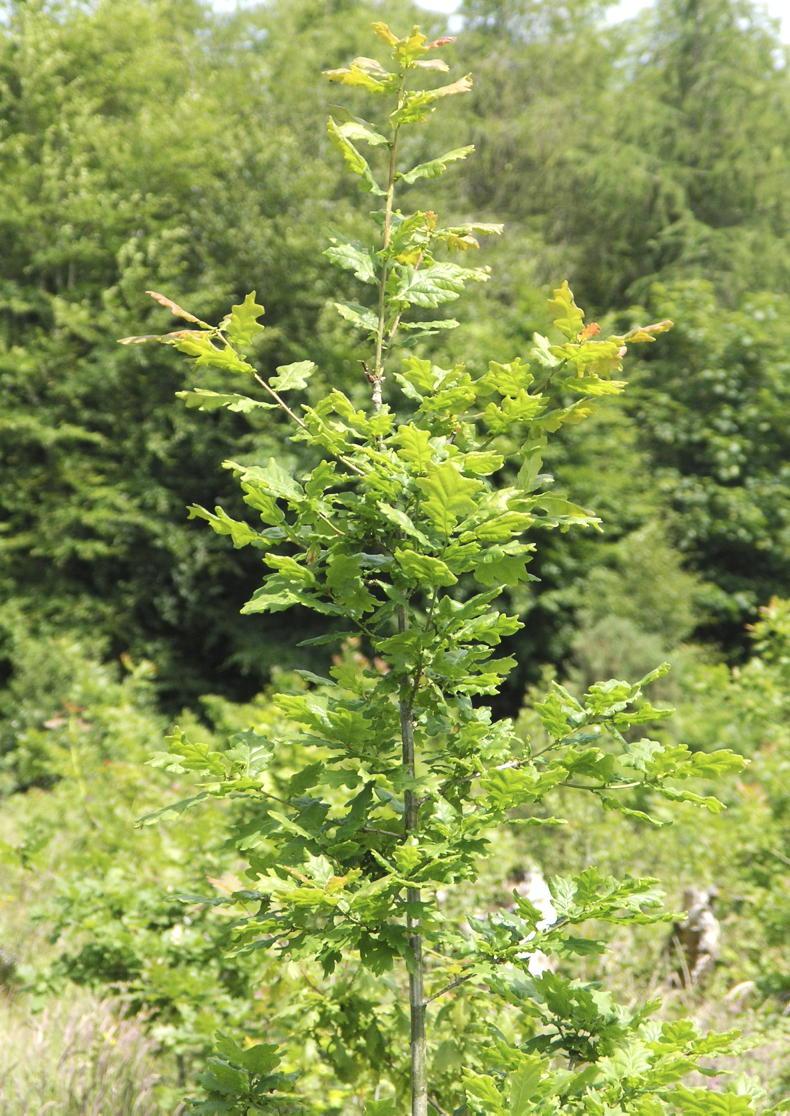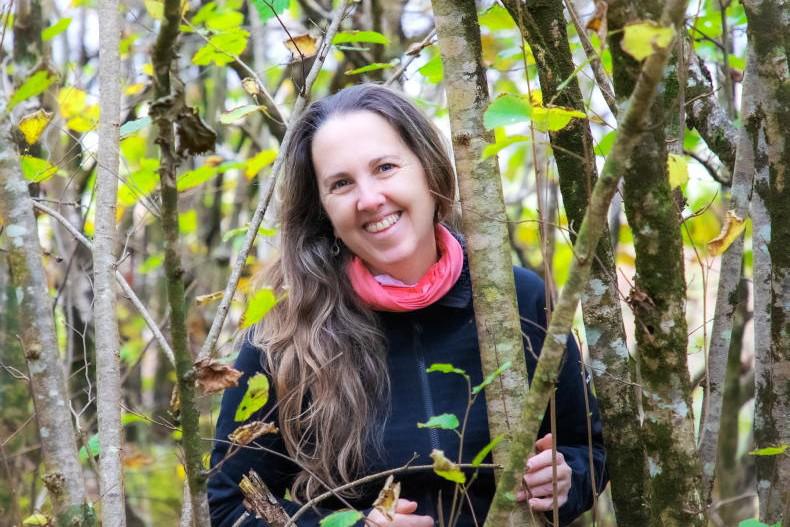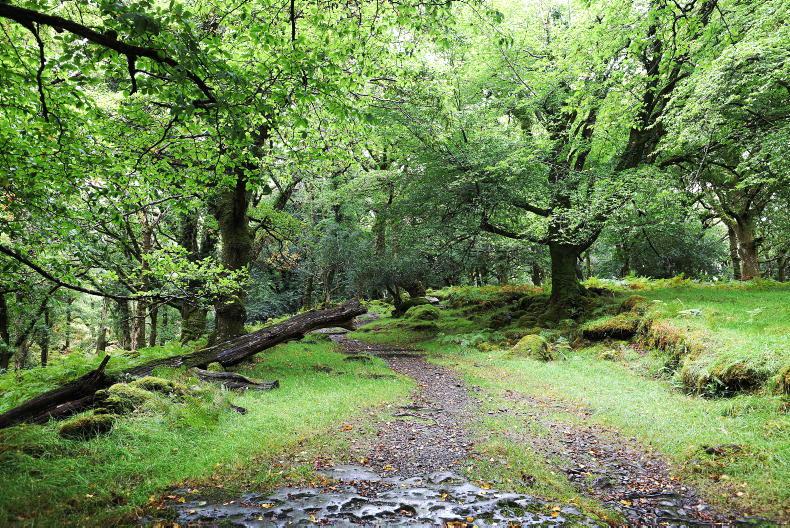Ancient or long-established (old) Irish woodland is usually defined as land that has been under continuous woodland cover since the national land surveys of 1660 and 1830, respectively, although may be much older.
These woodlands are often intensely rich with life: mosses and lichens cling to tree branches, thick ivy and honeysuckle stems weave their way up tree trunks, while wood anemone and bluebell may carpet the woodland floor in spring.
Other denizens of our old woodlands have enigmatic names that carry us back through the ages: toothwort; enchanter’s nightshade; amethyst deceiver.
Outside of their value for biodiversity, the societal benefits of native woodlands are extensive, from carbon sequestration and storage to the reduction of flood risk and the promotion of human health and wellbeing.
Regrettably, climate change, destruction or fragmentation of larger old woodlands, and the introduction of non-native and invasive plants and animals, all represent critical threats to our remaining ancient woodlands.
Old woodlands are irreplaceable
While the current flurry of tree planting initiatives is good news for future forests, it’s important to remember that newly planted woodlands can take many hundreds of years to be colonised by the rich tapestry of life that characterises old woodland.
This means that, once lost, ancient woodlands cannot be restored within our lifetimes, or even those of our children or grandchildren.
Safeguarding remnant woodlands
Protecting remaining old woodland on farms is one of the simplest and most rewarding measures we can take to safeguard the long-term biodiversity value of our farmland.
Furthermore, with the recent shift in farm payments towards rewarding hedgerows and scrub, we can hope that the value of our old woodlands will be increasingly recognised in future schemes.
Footprint Farmers
Our eight Footprint Farmers manage a diverse range of old, new, connected and disconnected woodlands, hedgerows and open-grown trees. We’re working with these farmers to help them maximise the biodiversity value of these habitats, beginning with some of the top tips described here.

Newly planted woodlands, while important for wildlife, can take many generations to gain the biodiversity value of older woodlands.
This year, the Footprint Farmers will also be experimenting with wildlife cameras to see what species are busy using the existing and new habitats that they are creating and maintaining on their farms.
We look forward to sharing their discoveries in these pages over the coming year.
Top tips: boost the biodiversity value of your woodlands
Edge habitats: contrary to popular belief, it’s not the centre of a woodland that supports the most wildlife. Often ‘edge habitats’, where there is a gradual transition from woodland to smaller trees and shrubs and finally to grassland, are the richest in biodiversity. Fence well back from woodland edges to maximise the benefits of your edge habitats.
Native climbers: much maligned species such as ivy and honeysuckle are in fact native to our woodlands and provide crucial nectar and berries to insects and birds.
Invasive species: keep an eye out for invasive species, particularly laurel and rhododendron, and act quickly to control them.
Dead wood: leaving dead wood to rot in your woodland or hedgerow provides for a wide range of species, from fungi and invertebrates to birds and bats. Standing deadwood rots from the inside out, whereas lying deadwood rots from the outside in, providing for two different suites of specialist insects and fungi.
Natural regeneration: in comparison to planted woodlands, naturally regenerated woodlands are a fraction of the work (and associated carbon costs) to establish, can be more resilient and well suited to the local environment and, according to recent research, can store 40 times more carbon than plantation woodlands. With mounting scientific evidence in their favour, we can hope that there will be greater financial support available for the creation of naturally regenerated woodlands in the future.
Habitat connectivity: if planting trees this winter, use it as an opportunity to create newly planted ‘wildlife corridors’ that link remnant old woodlands with new woodlands and other wildlife-friendly habitats on your farm.If you have native woodland on your farm and would like to know whether it may be classified as ‘old’ or even ‘ancient’, you can explore historical maps of Ireland online using Tailte Eireann’s GeoHive Map Viewer (geohive.ie).
To read last month’s feature on top tips for sourcing and planting trees this winter, read this article.
For more on measuring biodiversity on Footprint Farms, click here.
Ancient or long-established (old) Irish woodland is usually defined as land that has been under continuous woodland cover since the national land surveys of 1660 and 1830, respectively, although may be much older.
These woodlands are often intensely rich with life: mosses and lichens cling to tree branches, thick ivy and honeysuckle stems weave their way up tree trunks, while wood anemone and bluebell may carpet the woodland floor in spring.
Other denizens of our old woodlands have enigmatic names that carry us back through the ages: toothwort; enchanter’s nightshade; amethyst deceiver.
Outside of their value for biodiversity, the societal benefits of native woodlands are extensive, from carbon sequestration and storage to the reduction of flood risk and the promotion of human health and wellbeing.
Regrettably, climate change, destruction or fragmentation of larger old woodlands, and the introduction of non-native and invasive plants and animals, all represent critical threats to our remaining ancient woodlands.
Old woodlands are irreplaceable
While the current flurry of tree planting initiatives is good news for future forests, it’s important to remember that newly planted woodlands can take many hundreds of years to be colonised by the rich tapestry of life that characterises old woodland.
This means that, once lost, ancient woodlands cannot be restored within our lifetimes, or even those of our children or grandchildren.
Safeguarding remnant woodlands
Protecting remaining old woodland on farms is one of the simplest and most rewarding measures we can take to safeguard the long-term biodiversity value of our farmland.
Furthermore, with the recent shift in farm payments towards rewarding hedgerows and scrub, we can hope that the value of our old woodlands will be increasingly recognised in future schemes.
Footprint Farmers
Our eight Footprint Farmers manage a diverse range of old, new, connected and disconnected woodlands, hedgerows and open-grown trees. We’re working with these farmers to help them maximise the biodiversity value of these habitats, beginning with some of the top tips described here.

Newly planted woodlands, while important for wildlife, can take many generations to gain the biodiversity value of older woodlands.
This year, the Footprint Farmers will also be experimenting with wildlife cameras to see what species are busy using the existing and new habitats that they are creating and maintaining on their farms.
We look forward to sharing their discoveries in these pages over the coming year.
Top tips: boost the biodiversity value of your woodlands
Edge habitats: contrary to popular belief, it’s not the centre of a woodland that supports the most wildlife. Often ‘edge habitats’, where there is a gradual transition from woodland to smaller trees and shrubs and finally to grassland, are the richest in biodiversity. Fence well back from woodland edges to maximise the benefits of your edge habitats.
Native climbers: much maligned species such as ivy and honeysuckle are in fact native to our woodlands and provide crucial nectar and berries to insects and birds.
Invasive species: keep an eye out for invasive species, particularly laurel and rhododendron, and act quickly to control them.
Dead wood: leaving dead wood to rot in your woodland or hedgerow provides for a wide range of species, from fungi and invertebrates to birds and bats. Standing deadwood rots from the inside out, whereas lying deadwood rots from the outside in, providing for two different suites of specialist insects and fungi.
Natural regeneration: in comparison to planted woodlands, naturally regenerated woodlands are a fraction of the work (and associated carbon costs) to establish, can be more resilient and well suited to the local environment and, according to recent research, can store 40 times more carbon than plantation woodlands. With mounting scientific evidence in their favour, we can hope that there will be greater financial support available for the creation of naturally regenerated woodlands in the future.
Habitat connectivity: if planting trees this winter, use it as an opportunity to create newly planted ‘wildlife corridors’ that link remnant old woodlands with new woodlands and other wildlife-friendly habitats on your farm.If you have native woodland on your farm and would like to know whether it may be classified as ‘old’ or even ‘ancient’, you can explore historical maps of Ireland online using Tailte Eireann’s GeoHive Map Viewer (geohive.ie).
To read last month’s feature on top tips for sourcing and planting trees this winter, read this article.
For more on measuring biodiversity on Footprint Farms, click here. 









SHARING OPTIONS